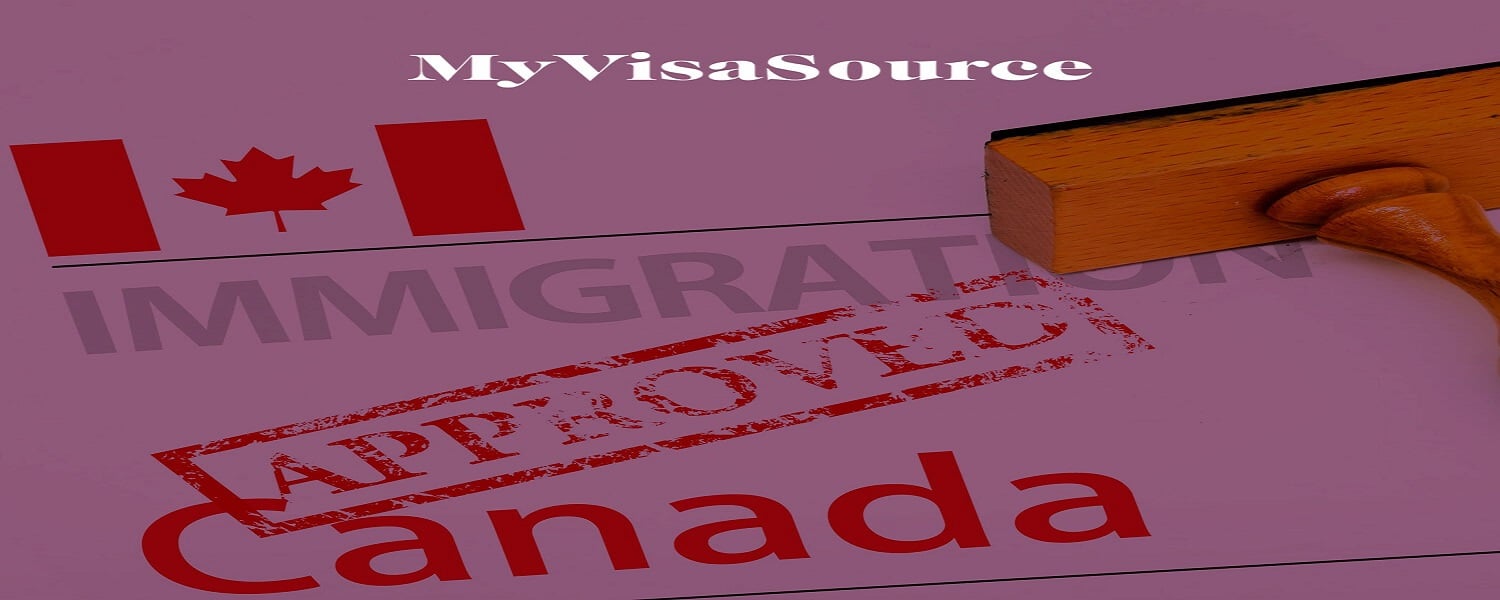It is widely known and acknowledged that Canada is the most open country in the world that readily accepts immigration from all over the globe. Canada is known for its welcoming and healthy attitude towards immigration like no other westernized nation in the world. This attitude comes from a host of decisions that led to the decentralization of immigration to Canada.
What Does Decentralization of Immigration Mean Compared to Other Westernized Countries?
Unlike countries like the United States and the United Kingdom, Immigration is centralized and only to the federal government. In Canada, there are over 100 immigration pathways managed by federal and provincial governments, municipalities and employers.
The rest of the world sees immigration as a nation-building function and centralizes its operations to the federal government, but Canada gives the freedom to all levels of the community to decide who settles across the country. This is the reason why Canada is the only country with the highest public support for its immigration policies. While its system is nowhere near perfect, it is designed to help and encourage foreign nationals from all walks of life to settle here.
How Did the Canadian Immigration System Get Decentralized?
This process was first started by the largest labor organization in Canada in 2017. The head of this organization held a meeting with the then immigration minister, Ahmed Hussein, to discuss the issue of growing underground workforces in the construction industry. It was coming to light that there were thousands of foreign workers employed as carpenters, concrete finishers, etc without proper work authorization.
Many came to Canada as temporary workers but failed to renew their work permits, some were international students on study permits, while others were tourists on visitor visas that never returned. A common outcome for these situations was the deportation of these foreign workers.
However, Canada faces a unique problem of an aging demographic and was expecting a boom of retirement in that sector that would lead to shortages of labor for the construction industry.
This led to the solution of having these foreign workers be set on the path towards Canadian citizenship. It was the first time in Canadian history that unions were given the responsibility of nominating applicants for permanent residence. This is one of the few ways Canada has used innovative immigration policies to deal with its unique problems.
Other countries like New Zealand and Australia have similar decentralized immigration policies. However, they can not compare to Canada’s level of open immigration policies that include specialized programs for butchers, mushroom harvesters, greenhouse workers, long-haul truck drivers, international graduates who want to set up their own business and other specific groups. It is also still continuously evolving!
How Did Quebec’s Cultural and Regional Self-Interest Spark Further Canadian Immigration Innovation?
Historically, this system began in 1991 when, after years of lobbying, Quebec won the right to retain its autonomy over nominating permanent residents for its province. This right was granted so that Quebec could retain its unique identity of being a predominantly French-speaking province.
The federal government gave Quebec the right to set up its immigration system and decide the number of individuals that will be allowed to enter annually. However, the federal government is still responsible for family sponsorship and refugee immigration. They will also ensure that all immigrants nominated by Quebec pass the admissibility tests.
This started a chain reaction where all the other provinces and territories wanted some level of control over their immigration policies. And since according to the constitution, immigration is explicitly a shared jurisdiction under Section 95, these demands couldn’t be ignored.
How Did the Creation of the Provincial Nominee Program (PNP) Revolutionize Canadian Immigration?
This gradually led to the creation of the Provincial Nominee Program (PNP) in 1996, where each province and territory would run its own separate version of the PNP. With the exception of Quebec Immigration and the newest territory, Nunavut. These programs would introduce various immigration streams tailored to the needs and requirements of the labor market of a particular province or territory. Eventually, these programs would emerge as an easier pathway for foreign nationals to obtain their Canadian permanent residency.
At first, everyone was skeptical about the efficiency of these programs as it was believed that provinces and other post-secondary institutions did not have a national interest as their primary focus. It was also worrying that these programs would lead to immigrants heading directly to provinces that already have established multi-ethnic communities.
Initially, these fears weren’t unbiased as it was observed that immigrants preferred settling down in Toronto (Ontario), Montreal (Quebec), and Vancouver (British Columbia) more which led to a shortage in other provinces. Many that chose to settle in other provinces rarely stayed there for long.
In 2013, only 28% of immigrants nominated by Prince Edward Island (PEI) in 2008 continued to reside there. This led to the problem of provinces being unable to retain their immigrants leading to overpopulation in select cities and underpopulation in others.
How Did Express Entry Help Immigration to Canada?
In January 2015, the Canadian government launched the Express Entry online system that included the three main federal economic immigration programs that funnels into Express Entry:
All applications to these three programs were to be managed by the online Express Entry system which ranked their profiles based on the Comprehensive Ranking System (CRS).
The Express Entry system was massively successful by increasing the flexibility in the nomination process of the applicants and meeting each regional labour market demands for skill shortages.
How Did Express Entry Align With PNP Streams Further this Evolution?
Since then, several provinces have used the Express Entry system to nominate applicants for permanent residence. Nominations made by the PNP through the Express Entry system are known as ‘Enhanced Nominations.’ By 2017, there was an almost 73% increase in enhanced nominations made by various provinces through the Express Entry system. Today, almost all PNPs offer their Express Entry aligned immigration streams with unique eligibility requirements based on the objectives of their program.
How Were Business Immigration Programs Used to Improve PNPs?
The business immigration programs introduced by the provinces also came under criticism as many entrepreneurs choose to forfeit their investments in rural areas to settle elsewhere. Prince Edward Island’s investor program saw as much as two-thirds of the applicants abandoning their bonds worth $200,000 each leading to a shut down of the program in 2018.
There was also skepticism as to the real effect of these business immigration programs on the economy as no concrete data could be found on the number of jobs created by such businesses and whether they were still operational.
See Provincial Business Programs, an overview of each province or territory's PNP streams (programs) designed to attract international entrepreneurs and investors and like-minded international graduates and more groupings.
Why Was the Decentralized System Maintained If It Was Facing So Many Challenges?
Well, the simple answer to that is Canada's declining birth rates and an increasingly aging population. Canadians simply aren’t having enough children to replace the aging workforce. This is causing some very real labor market shortages where there are not enough young people that are working to replace those retiring. The reality of the situation required more innovation.
Atlantic Canada has the most acute demographic crisis, with the oldest population and lowest birth rates. In such cases, immigration is the only way to deal with labor shortages. Atlantic Canada is comprised of the following provinces: New Brunswick, Nova Scotia, Prince Edward Island (PEI) and Newfoundland and Labrador.
In the Prairie Provinces, which are the provinces of Alberta, Saskatchewan and Manitoba, consider Alberta’s situation where 50% of all the working nurses, aides, orderlies and healthcare associates are foreign-born.
Why Did Further Decentralization of Immigration Programs Occur?
To deal with the problem of provinces being unable to retain their immigrants, new rules were made that gave the immigration minister the power to create and abolish programs without holding public hearings or consulting the parliament. Speeding up the much-needed changes to programs by eliminating government red tape in their processes.
However, this led to a new wave of decentralization in 2016, when John McCallum, the new Liberal immigration minister, used this rule to give towns, community groups and employers the freedom to create their immigration programs.
This increased local support for increased immigration. Soon after this, the Atlantic Immigration Pilot Program (AIPP) was launched as the first employer-driven program for the Atlantic provinces of Canada. This program required the employers to take responsibility for their sponsored immigrants by ensuring a settlement plan that would help them integrate into the community.
The AIPP slowly gained traction and became one of the most successful employer programs which eventually inspired the creation of the Rural and Northern Immigration Pilot (RNIP). The RNIP is a community-driven program that was aimed at encouraging economic immigration to certain rural and northern communities. Each community participating in the program has its unique demands. Vernon in British Columbia, one of the 11 communities currently part of the pilot focused on its local labor market shortages. While Sudbury in Ontario required foreign workers in mining and tourism, Thunder Bay, also in Ontario, was more focused on nominating nurses and pulp-mill operators.
While this program was quite innovative, the implementation required small economic development agencies in these communities to deal with thousands of profiles, verify documents and select candidates for nomination. Another program like this was soon launched. The Agri-food Pilot program was launched for non-seasonal, permanent agricultural workers who want to settle permanently in Canada.
This program encouraged foreign workers to settle in agricultural-dominated regions which ultimately increased immigration to rural areas. This program entirely shifted the idea of who the country wanted as its immigrants. While the federal government was more focused on promoting immigration of foreign workers in white-collar jobs, these local programs were key in filling the essential labor market shortages by encouraging immigration of foreign workers employed as mechanics, nursing home attendants, dishwashers, etc.
Has Decentralization of the Canadian Immigration System Been Successful?
A recent evaluation of the PNPs in 2017 revealed that most of the problems identified at the initial stages were resolved. Decentralization has been successful in combating the primary problem of encouraging and retaining immigration to smaller communities and rural areas.
In 1999, the number of immigrants living outside metropolitan areas was 1 in 10. However, this number has tripled by almost 30% in 2019. The retention rate of many provinces has also improved greatly. Programs like the AIPP have been successful in improving the retention rates of different regions.
Although one challenge remains. Decentralization has made the Canadian immigration system extremely complex and difficult to navigate. Choosing the best immigration option out of over 100 available pathways is quite overwhelming and difficult. Many foreign nationals are left confused with the overflow of information without a proper understanding of how many programs function.
Why Is Canada So Innovative in Its Immigration Policy?
Historically, Canada has always experimented with immigration. Canada was the first country to use a points-based system to select its permanent residents back in 1967. This encouraged an unbiased and economically focused approach in nominating new immigrants.
It also became the first country to allow private citizens to sponsor refugees in 1979. Canadian immigration policies have been copied internationally because of its success.
Having so many people have a stake in the country’s immigration system makes a big difference in the public’s attitude towards these immigration policies and helps the country avoid divisive politics like seen in the US, the UK and Australia.
Since the push for decentralization began in 1998, Canadian's attitudes about immigration have remarkably improved. This is not to say that there is absolutely no possibility of discrimination or xenophobia in Canada. However, Canadian laws are always present to protect immigrants from such attitudes if they lead to abusive incidents and anti-immigration political leaders have always failed on election days.
Not surprisingly enough, the global pandemic that started in 2020 has further reinforced support for immigration as foreign workers stepped up as frontline workers to help the government deal with the pandemic. Since provincial governments are in charge of their immigration programs, anti-immigration politics remain low at local levels. A high standard of living for Canadian citizens has also contributed to less paranoia about immigration among citizens.
Moreover, immigrants are a thriving part of Canada’s political class. The men who started the decentralization of the immigration system by allowing construction workers without legal status to apply for permanent residency were both foreign-born and had come to Canada at a young age. There are almost 47 sitting members of Parliament who were born abroad. Therefore, Canada’s immigration policies are shaped by people who have had a personal and up-close experience with the Canadian immigration system.
What Are Canada’s Future Plans for Immigration?
Despite the ongoing global pandemic, Canada’s immigration minister Marco Mendicino announced that for Canada’s Immigration Levels Plan for 2021-23, Canada will welcome over 401,000 immigrants annually for the next 2 years. This is being done in the view of an aging population that will present problems like a fall in the number of working adults, a shrinking tax base and reduced consumer spending and to help economic recovery efforts post-Covid 19.
According to a report published in the Lancet, the global population is expected to decline in 2064. This shift in the demographics will devastate national economies. By increasing immigration, Canada is hoping to get ahead of this problem. Due to a decentralized immigration system, Canada will be able to fill the labor market shortages by encouraging immigration to small towns and cities.






